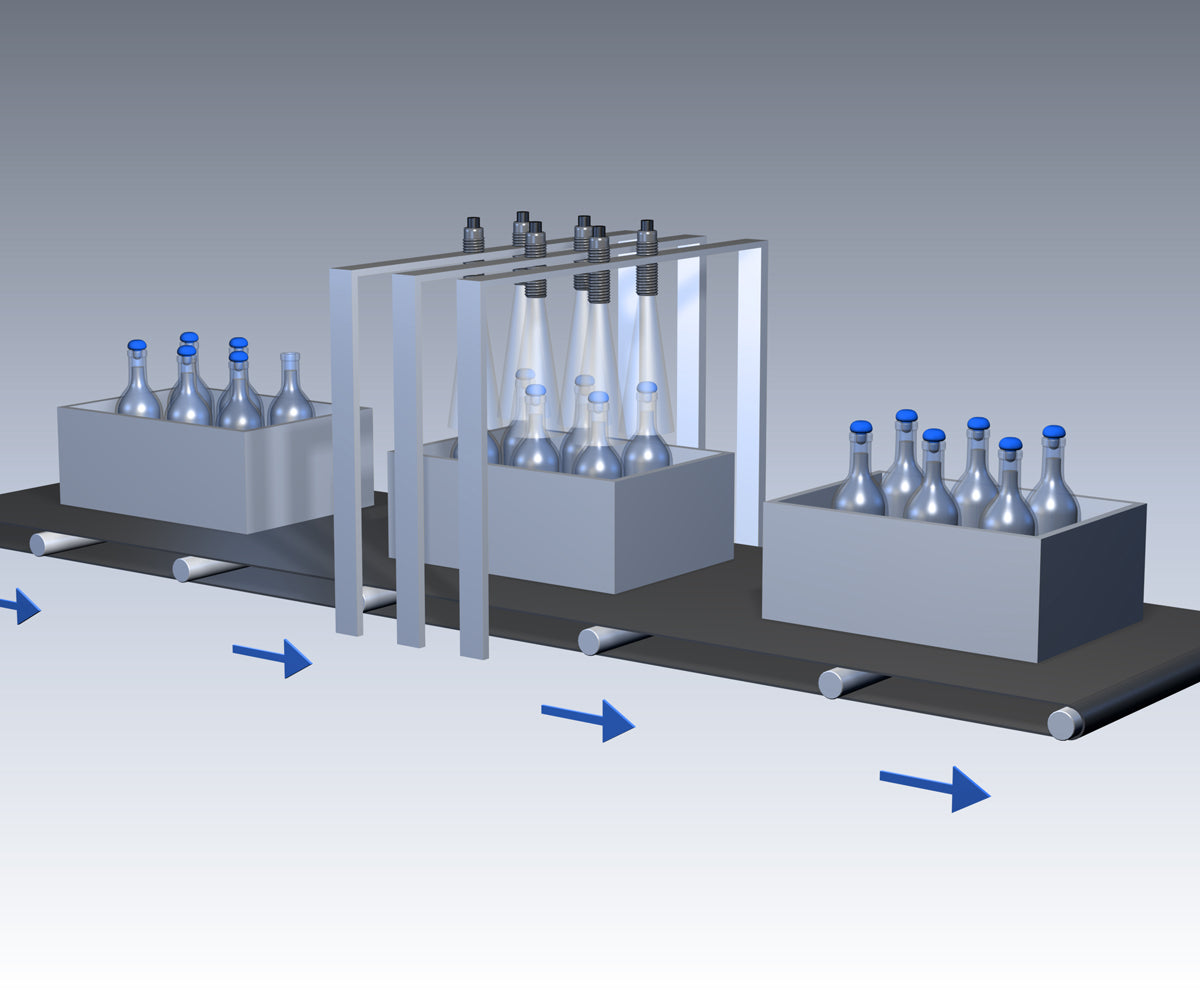Summary
An American beverage producer conducts a final, pre-shipment check on all cases of bottles after the corrugated cardboard case has been sealed. Product integrity is verified by detecting bottle caps through layers of cardboard at the top of each sealed case.
Customer Values
- Cost effective solution
- Non contact / non-marring of packaging
- Eliminates shipment of damaged or soiled product
- Long performance history
Specific Product Advantages
- Long operating distance (3x standard value)
- Easy mounting and adjustment
- Secure distance between moving object and sensor
- High switching frequency
- Excellent sensing stability, even with small and thin targets
Customer Application
Cartons or pallets stacked on a lift platform in the down position may become unstable when the lift position changes. Also, if a load has any protruding parts, they may snag the edge of a floor as the lift rises or descends. This causes tipping, which can result in damage to both the load and the installation, with risk of injury to persons nearby.
A metal bar is fitted on the lift to ensure correct load position. Unless this bar has been pivoted into its cradle, the lift will not start. Also, any subsequent movement of the safety bar caused by an unstable load will stop the platform. Generally, this is a very simple electrical scheme with only AC power available on site. Mechanical limit switches were considered, but frequent switching wears out the mechanical contacts, while dust and moisture adversely affect reliability. The customer therefore seeks an equally simple, non-contact solution.
Customer Solution
A Basic range inductive sensors from the Classics family (series 600), satisfies the customer’s requirements. To verify that the bar has cleared the load and lodged in the cradle, a 2-wire AC/DC sensor with 4 mm operating distance is embedded in the cradle itself. The sub-flush mounting position protects the sensing face from any mechanical contact. With a wide voltage range and short-circuit protection, these sensors also meet the customer’s on-site electrical requirements. Since the safety bar can become deformed with prolonged use, a sensor is chosen with an increased operating distance. This allows compensation for gradual target drift by simple range adjustment, rather than by repositioning the sensor itself.
The sensor closes an enabling circuit for the start button, which in turn latches a relay controlling the lift motor. Any movement of the safety bar caused by an unstable load will open the circuit and unlatch the relay, stopping unsafe movement of the platform.
